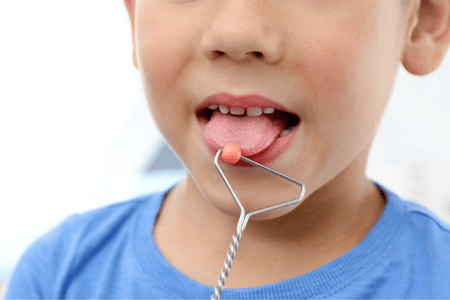
Has your child’s speech consistently sounded slurred or unusually slow? Do familiar listeners struggle to understand what they’re saying? When a child’s speech clarity suffers due to muscle control problems, they may have childhood dysarthria. This motor speech disorder affects how children produce speech sounds, making their words hard to understand despite having normal language skills.
This guide explains childhood dysarthria in clear terms. You’ll learn what causes this condition, how to recognize the signs, and what treatment options can help your child communicate more effectively. Our goal is to give parents and caregivers practical knowledge about this speech impairment so you feel confident supporting your child’s communication journey.
Understanding Childhood Dysarthria
Childhood dysarthria is a motor speech disorder that disrupts a child’s ability to produce clear speech sounds. The brain has trouble coordinating the muscles needed for speech production, including the tongue, lips, voice box, and breathing muscles. Unlike other speech disorders where children choose wrong sounds or struggle with speech planning, dysarthria affects the physical execution of speech movements.
Children with dysarthria often experience muscle weakness, paralysis, or abnormal tone in their speech muscles. This makes precise movements for clear speech difficult. The result is speech that sounds imprecise, slow, or requires visible effort. Think of it like a poor connection between the brain and mouth – the child knows exactly what they want to say, but the nerve impairment prevents smooth speech execution.
This condition doesn’t reflect intelligence or desire to communicate. The child typically has normal language skills and clear thoughts. The problem lies purely in the motor control needed to produce speech. This distinguishes dysarthria from language delays, where children might not know what to say, or from typical speech sound learning issues.
Dysarthria vs. Other Speech Disorders
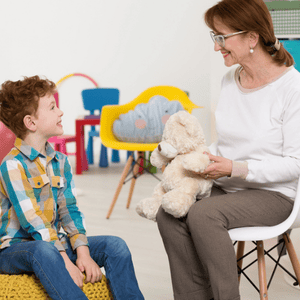
Two children might both have unclear speech for very different reasons. Childhood dysarthria often gets compared to childhood apraxia of speech because both are motor-based speech disorders with key differences.
In childhood apraxia of speech, the problem involves planning or programming speech movements, not muscle strength. Children with apraxia struggle to sequence sounds and syllables. Their errors tend to be inconsistent – the same word might sound different each time they attempt it. They might grope or struggle to find correct mouth positions. However, their muscles aren’t weak. Non-speech activities like licking a lollipop or blowing work normally.
In childhood dysarthria, the issue lies in executing movements due to nervous system problems. The child’s errors are typically consistent and predictable because weakness or abnormal tone affects movements the same way each time. Children with dysarthria often struggle with both speech and non-speech oral activities. They may have trouble blowing bubbles, sucking through straws, or chewing effectively because the weakness affects all oral movements.
Additionally, dysarthric speech may include quality changes like breathy voice or nasal-sounding speech due to muscle involvement. Childhood apraxia mainly affects articulation and rhythm without voice changes.
To summarize: dysarthria equals muscle control problems, while apraxia equals speech planning problems. Both conditions can reduce speech intelligibility. Sometimes children have both conditions together, particularly those with cerebral palsy. A qualified speech language pathologist carefully evaluates children to distinguish between these diagnoses and ensure appropriate treatment.
Causes of Childhood Dysarthria
Childhood dysarthria results from underlying neurological or neuromuscular impairments. Something affects the brain, nerves, or muscles in ways that disrupt speech muscle control. Causes fall into two main categories: congenital and acquired.
Congenital Conditions
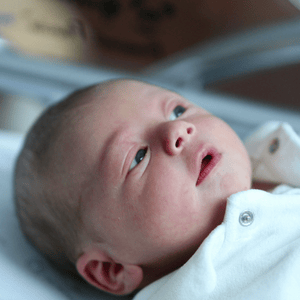
Congenital conditions are present from birth or develop very early in life. The most common cause is cerebral palsy, a group of disorders from early traumatic brain injury or abnormalities. Research shows about 78% of verbal children with cerebral palsy have dysarthria. Brain damage in cerebral palsy often affects motor control areas, leading to speech muscle coordination difficulties.
Other congenital causes include genetic or chromosomal disorders like Down syndrome. Children with Down syndrome have reduced muscle tone and often develop dysarthric characteristics. Certain metabolic or neuromuscular diseases like some forms of muscular dystrophy can weaken muscles. Developmental brain malformations, syndromes, or neonatal stroke can also cause dysarthria if they damage motor control areas.
Acquired Neurological Injuries
Acquired neurological injuries happen after a period of typical development. Traumatic brain injury from accidents or falls can damage brain areas responsible for control. A child might wake up after significant head injury with slurred speech due to dysarthria. Pediatric stroke, though less common in children than adults, can lead to dysarthria if it affects motor pathways.
Brain tumors or brain surgery for conditions like epilepsy or tumor removal can result in acquired dysarthria, depending on affected areas. Severe brain infections like encephalitis or other neurological conditions can also cause this disorder.
Progressive or Degenerative Conditions
Progressive or degenerative conditions are rare in children but worth mentioning. Sometimes dysarthria could signal early signs of degenerative neurological disease. Some inherited metabolic disorders or childhood-onset neurodegenerative syndromes might initially appear as deterioration. Most childhood dysarthria involves static conditions like cerebral palsy or one-time injuries rather than ongoing degeneration.
How Dysarthria Affects the Nervous System
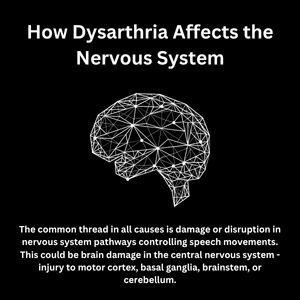
The common thread in all causes is damage or disruption in nervous system pathways controlling speech movements. This could be brain damage in the central nervous system – injury to motor cortex, basal ganglia, brainstem, or cerebellum. It might affect peripheral systems like cranial nerves carrying signals to speech muscles. Sometimes the muscles themselves don’t function properly.
Speech production involves several subsystems that can be affected:
Respiration provides airflow through lungs and breathing muscles. Weak respiratory muscles mean children with dysarthria might not have sufficient breath to speak loudly or sustain long utterances.
Phonation creates voice through vocal folds in the larynx. Weak or uncoordinated voice box muscles can cause breathy voice, hoarse voice, or trouble controlling pitch and volume. These symptoms often co occur with childhood apraxia of speech and other communication disorders.
Resonance shapes sound in the mouth, nose, and throat. A working soft palate prevents overly nasal speech. Weak palate muscles cause hypernasal speech where too much air escapes through the nose, a common feature in flaccid dysarthria.
Articulation involves tongue, lips, and jaw movements forming specific sounds. Weak tongue and lip muscles lead to imprecise articulation, slurred speech, and reduced intelligibility in connected speech.
Prosody encompasses rhythm, pitch, and intonation patterns that emerge from how well other systems work together. Addressing prosody is a focus of therapy aimed at enhancing natural-sounding speech for children with dysarthria.
In childhood dysarthria, breakdowns can occur in any or all subsystems. Many neurological conditions affect multiple muscle groups simultaneously, causing children to experience several symptoms at once.
Signs and Symptoms of Dysarthria in Children
As a parent or caregiver, childhood dysarthria symptoms vary between children but share common characteristics. Here are typical signs to watch for:
Slurred or Mumbled Speech
This makes words run together or sound fuzzy. It seems like children with dysarthria are “mushing” their words, making individual sounds or syllables hard to distinguish. This comes from imprecise articulation when tongue, lips, and jaw don’t hit their targets for each sound. Some describe acquired dysarthria or congenital cases as sounding “blurred.”
Speech therapy helps improve intelligible speech in children with dysarthria. Communication disorders like childhood apraxia may present similarly but have different causes. Targeted speech and language therapy supports a child’s communication skills over time. Ongoing hearing research also helps refine treatments for children with dysarthria.
Abnormal Speech Rate
This often means children with hypokinetic dysarthria speak more slowly than typical, as if each word requires effort. They may pause frequently to catch their breath or plan difficult sounds. Sometimes phrase length varies unpredictably, speeding up and slowing down in jerky patterns. This creates choppy sounds that are unnatural.
Listeners may hear few intelligible words due to reduced precise articulation. Sustained vowels may sound weak or breathy, adding to the trouble understanding. Studies and ongoing hearing research continue to explore ways to improve clarity for these speakers.
Quiet or Weak Voice
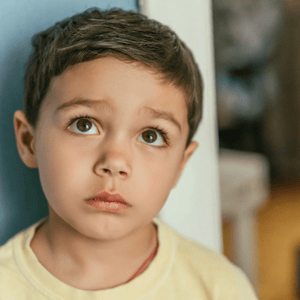
Quiet or weak voice results from limited breath support or affected muscles. Mixed dysarthria and motor speech disorders can co occur, causing reduced intelligibility. Children might talk so softly they’re hard to hear, prompting listeners to request clarification. Others struggle with volume control, oscillating between too quiet and too loud.
You might notice voices fading at sentence endings as they run out of air. These symptoms can co occur with childhood apraxia of speech or other motor speech issues. The International Journal of Child Neurology often highlights how these factors impact a child’s intelligibility and communication success.
Difficulty Moving Mouth Muscles
Difficulty moving mouth muscles becomes apparent when children with dysarthria struggle to stick out their tongue, move it side to side, or pucker their lips. Their jaw may not open or close smoothly. This reflects underlying muscle weakness or reduced coordination from neurological impairment affecting all oral movements.
Speech therapy and language therapy target these challenges to improve a person’s speech and connected speech. Children with dysarthria may also face broader communication disorders that impact language skills. Hyperkinetic dysarthria can further complicate control. Hearing research and studies in Developmental Medicine inform better treatment for children with dysarthria today.
Strained or Hoarse Voice
Strained or hoarse voice sounds like children with dysarthria are pushing their voice out with effort. This tight, strained voice happens with too much muscle tone, often linked to motor control issues. Others might have breathy voice with lots of air escaping during speech, indicating too little muscle tone in the voice box.
Both patterns reflect the impact of motor speech disorders on vocal function. Such voice qualities can reduce intelligibility, making communication disorders more pronounced. Speech therapy often targets breath support and vocal fold coordination to improve voice quality. Managing quality helps children with dysarthria develop clearer, more controlled speech, enhancing their ability to participate in daily conversations.
Nasal-sounding Speech
Nasal-sounding speech occurs when speech language consistently sounds like talking through the nose. This hypernasal speech happens because the soft palate muscle doesn’t close off the nose properly during non-nasal sounds. It’s like deliberately talking while holding your nose, except it’s unintentional.
Flaccid dysarthria often contributes to this issue through muscle weakness. Research explores how this affects childhood apraxia and related disorders. Understanding the role of soft palate control within language function is key to addressing hypernasality effectively in both therapy and medical management.
Monotone or Robotic Prosody
Monotone or robotic prosody means children don’t use typical pitch inflection or stress patterns. Their speech sounds flat, lacking usual ups and downs in pitch that convey emotion or distinguish questions from statements. Some develop scanning speech production with equal stress on every syllable, creating mechanical-sounding rhythm.
Drooling or Poor Saliva Control
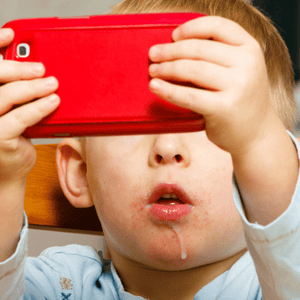
Drooling or poor saliva control happens because the same oral muscles needed also help with swallowing. Weak or uncoordinated muscles, as seen in flaccid dysarthria, make saliva management difficult. You might notice wet chins or need to remind children to swallow.
Research in developmental medicine and the International Journal of Child Neurology highlights how these symptoms often overlap with childhood apraxia of speech and other speech language disorders. Understanding the connection between swallowing and language function helps guide effective treatment. Ongoing studies in child neurology inform better support strategies for managing drooling in these populations.
Feeding and Chewing Difficulties
Feeding and chewing difficulties often accompany pediatric dysarthria since language and eating use similar muscles. Children might be picky about food textures, take long to chew and swallow, or occasionally cough on liquids. This suggests motor learning challenges affecting oral muscles generally.
Such difficulties often co-occur with communication disorders, impacting a child’s ability to produce single words and build communication skills. Ongoing hearing research helps refine interventions. Identifying these issues early guides appropriate treatment to improve both feeding and speech and language outcomes, supporting a child’s ability to engage successfully in everyday communication skills.
Reduced speech intelligibility
Reduced speech intelligibility encompasses all these symptoms. People struggle to understand the child’s speech, even parents accustomed to their speaking patterns. Strangers frequently ask “What did you say?” Children need to repeat themselves often or use gestures for clarification.
Consider when you notice symptoms. Dysarthric speech might worsen when children are tired or excited because muscle control decreases with fatigue or rushing. Shorter phrases might be clearer than longer sentences that “fall apart” as they progress.
How Dysarthria Is Diagnosed in Children
If you suspect childhood dysarthria, start with thorough assessment by a language pathologist. They evaluate speech and oral motor function to determine what’s causing difficulties.
Case History and Medical Background
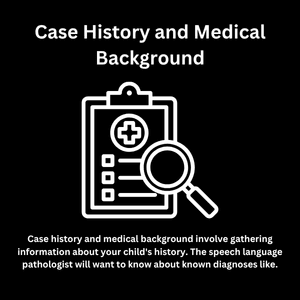
Case history and medical background involve gathering information about your child’s history. The speech language pathologist wants to know about known diagnoses like cerebral palsy or genetic syndromes, birth complications, early developmental issues, and when problems first appeared. Previous evaluations or therapy reports help focus assessment. Known causes help target evaluation – if a child has cerebral palsy, pediatric dysarthria becomes a likely consideration.
Oral Motor Examination
Oral motor examination checks how your child moves mouth structures. They might ask children to stick out tongues, puff cheeks, smile, or bite while observing range, strength, speed, and coordination. They check for muscle weakness, paralysis, or abnormal tone in tongue, lips, jaw, and soft palate. In pediatric dysarthria, examiners might note slowed movement, reduced range, or one side weaker than the other.
Assessment
Speech assessment involves various tasks including naming pictures, repeating words, saying sentences, and conversational speech. The speech language pathologist listens to how children produce speech sounds, checks which sounds are clear versus distorted, and notes patterns. They evaluate speech intelligibility by measuring how much unfamiliar listeners understand.
Assessment of Subsystems
Assessment of subsystems considers each component. For respiration, they notice how many words children say on one breath and whether they run out of air. For phonation, they listen to voice – consistently breathy, strained, too soft or loud. For resonance, children might say non-nasal phrases to check for unwanted nasality. For articulation, they note slurring, sound omissions, or substitutions. Dysarthria often causes sound distortions rather than clear substitutions.
Differential Diagnosis
Differential diagnosis determines which speech disorder is present. Speech language pathologists distinguish pediatric dysarthria from childhood apraxia of speech or other speech disorders using symptom patterns. Consistent distortions and voice issues point toward dysarthria, while inconsistent errors and groping suggest apraxia. Sometimes children have multiple issues requiring comprehensive evaluation.
The evaluation outcome should clearly describe your child’s strengths and challenges with specific diagnosis. For example: “Your child shows characteristics consistent with spastic dysarthria related to cerebral palsy. Speech intelligibility is about 50% to unfamiliar listeners. Language skills are normal for their age.”
Types of Childhood Dysarthria

Professionals classify pediatric dysarthria by type based on which nervous system part is affected. Understanding types can clarify why your child’s speech sounds specific ways.
Spastic dysarthria comes from upper motor neuron damage, like in spastic cerebral palsy. Muscle tone increases, creating stiff, tight muscles. Speech characteristics include slow, labored speech with strained-strangled voice quality. Children sound like they’re pushing words out with effort. Consonants are imprecise with little pitch or loudness variation.
Flaccid dysarthria results from lower motor neuron damage, such as cranial nerve injuries or conditions like muscular dystrophy affecting facial muscles. Muscle tone reduces, causing weakness or paralysis. Speech features breathy voice from weak vocal fold closure, hypernasal speech from weak soft palate, and imprecise articulation from reduced lip and tongue strength.
Ataxic dysarthria comes from cerebellum or pathway damage affecting movement coordination. Less common in children, it can occur with cerebellar tumors or ataxic cerebral palsy. Speech sounds irregular and uncoordinated with jerky rhythm. Children might stress wrong syllables or have unpredictable pitch and loudness changes.
Hyperkinetic dysarthria results from involuntary muscle movements, often from basal ganglia damage. In children, this appears in conditions like athetoid cerebral palsy or movement disorders. Speech characteristics vary widely because involuntary movements affect different muscles unpredictably. You might hear speech interruptions, voice breaks, or sudden loudness changes.
Mixed dysarthria describes children who don’t fit one category but show multiple features. Mixed spastic-ataxic dysarthria is common in certain cerebral palsy types where some muscles are tight and movements are uncoordinated. Many real-life childhood dysarthria cases are mixed, reflecting widespread neurological involvement.
Knowing the type helps clinicians choose targeted treatments, but regardless of type, goals remain similar: improve speech intelligibility and communication abilities.
Treatment Options for Childhood Dysarthria
Speech therapy forms the cornerstone of childhood dysarthria treatment. There’s no medication or quick medical cure; improving speech requires practice, exercises, and learning strategies with speech language pathologist guidance. Goals focus on helping children speak as clearly as possible and ensuring effective communication.
Speech Therapy and Motor Learning Principles
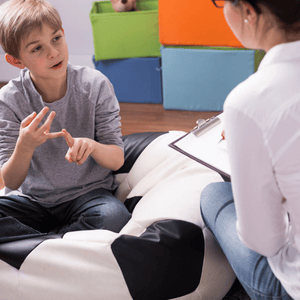
Speech therapy for dysarthria is highly individualized. Speech and language therapists develop therapy plans based on specific difficulty areas identified. Therapy often targets multiple speech production aspects including breathing, voice quality, articulation, and speech rate.
Motor learning principles structure effective therapy. Research in neuroplasticity suggests certain practice approaches lead to better outcomes:
Repetition builds muscle memory like learning instruments or sports. Children might practice the same sound or word dozens of times per session. Therapists make repetition fun through games and activities. A child might feed a puppet cookies while practicing target words clearly.
Gradual difficulty increase starts with simpler tasks before harder ones. Children begin with single sounds or syllables, progress to single words, then short phrases, eventually reaching longer sentences and connected speech. This ensures mastery of basics before complex speech.
Feedback and cueing help children improve through visual cues like mirrors, tactile cues like face touching for placement guidance, or verbal feedback praising efforts. Over time, children internalize what feels or sounds right for self-correction.
Frequent, consistent practice with more therapy sessions and regular home practice yields better results through consistent reinforcement. Short daily home practice, even 5-10 minutes of specific exercises, helps solidify weekly therapy learning.
Varied practice conditions improve generalization by practicing target sounds in different words or phrases with different emotions or speeds. This helps children carry skills to real-life talking situations.
A 2023 systematic review of motor speech interventions for children with cerebral palsy found almost all studies reported improvement in speech intelligibility or articulation when children received targeted therapy. Research confirms therapy helps children make speech clarity gains, though approaches continue being refined for maximum effectiveness.
What Happens in Speech Therapy
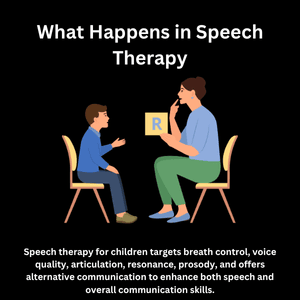
Speech therapy activities depend on your child’s unique profile. Common focus areas include:
Respiratory support addresses low volume or running out of breath through breathing exercises. This involves coordinating breath with speech, not just deep breathing. Children practice taking proper breaths and saying short phrases before air runs out, gradually lengthening utterances per breath. Blowing games strengthen muscles and teach controlled airflow.
Voice and phonation work targets voice quality issues. For quiet, weak voices, approaches like Lee Silverman Voice Treatment adapted for children focus on increasing loudness through “big voice” games. For strained voices, therapy emphasizes relaxation techniques and gentle voice onset. Pitch variation exercises use animal sounds or simple songs to practice voice changes.
Articulation improves precision of speech sounds. Many children with pediatric dysarthria struggle with sounds requiring precision like “s,” “z,” “r,” or “l.” Speech language therapists work on improving articulation precision through exaggerated mouth movements, teaching over-articulation to compensate for weakness. Visual aids like mirrors help children compare their mouth positions to therapists’ positions.
Resonance and oral motor coordination addresses overly nasal speech through exercises improving soft palate movement. Feedback techniques help children learn to reduce nasal air escape. Oral motor exercises might strengthen muscles or improve control, though current practice emphasizes embedding exercises in actual speech tasks for better effectiveness.
Prosody and rate control prevents monotone or robotic-sounding speech through intonation pattern practice. This involves reading sentences with different emotions and exaggerating pitch changes. Rate control often focuses on teaching children to slow down speech. Techniques include pausing between words, using pacing boards, or rhythmic tapping to enforce slower speaking.
Augmentative and alternative communication provides communication methods besides speech when significantly impaired. This ranges from simple gestures and picture boards to high-tech speech-generating devices. Introducing alternative communication doesn’t mean abandoning speech – it’s often used alongside speech therapy. Research shows intensive communication combined with speech therapy improves both communication abilities and spoken speech accuracy.
Improving Communication in Everyday Life
While therapy improves speech, we also ensure children can communicate effectively right now through environmental adaptations and communication strategies:
Encourage all communication forms by having children use gestures, pointing, or drawing to supplement speech. If children have communication devices or picture boards, keep them accessible and encourage use. Value all communication attempts, whether spoken or not.
Teach repair strategies for times when others don’t understand. Simple strategies include repeating slower, trying another way like spelling words or using gestures. Practice these at home in safe settings so children feel confident using them in real situations.
Educate communication partners by explaining your child’s speech differences to teachers and others who interact with them. Provide clear information about what dysarthria is and how to best communicate with your child. This ensures others give necessary time for expression rather than pretending to understand.
Create speech-friendly environments by reducing background noise and ensuring face-to-face communication when possible. These environmental adjustments reduce communication barriers and help your child be understood more easily.
Build confidence by celebrating successes and progress. Set children up for communication success through supportive interactions with understanding family members. Point out strengths and remind children that what they say is important.
Prognosis and Outcomes

Most children with dysarthria make noticeable improvements with therapy and time, though improvement degree varies. Children with mild dysarthria might improve to near-typical speech with slight differences only close family notice. Children with severe dysarthria due to significant neurological conditions might always have some speech impairment but can usually improve from their starting point and learn strategies for better intelligibility.
Improvement extent depends on factors like cause, severity of motor impairment, cognitive abilities, and how early and intensively children receive therapy. Research indicates early intervention is beneficial since young children’s brains are very adaptable for learning motor skills. Starting therapy as soon as dysarthria is identified maximizes potential.
Even if speech remains imperfect, communication can almost always become effective through improved speech combined with other supports. Communication improvements often lead to broader positive effects as children become more confident and engage more with peers.
Supporting Your Child and Next Steps
Living with childhood dysarthria presents challenges, but with right support, your child can thrive. Here are key tips for parents and caregivers:
Be patient and positive as progress often comes gradually. Celebrate every improvement, even small gains like clearer sounds or slower speech rate. If your child senses encouragement and patience, they’re more likely to keep trying. Avoid showing frustration when you can’t understand them.
Educate others by equipping people in your child’s life with knowledge. When family members, teachers, and caregivers understand why your child’s speech is different and how to communicate best, it improves interactions for everyone. Teaching them about the nature of motor problems helps foster patience and effective communication strategies. The more supportive the environment, the more confidence your child will develop in their motor abilities, leading to better outcomes both in therapy and everyday life.
Use available resources including support groups and information resources for pediatric motor speech disorders. Organizations for cerebral palsy or specific syndromes often have communication sections. Engaging with other parent communities provides emotional support and practical tips.
Work closely with your speech language pathologist by maintaining open communication about therapy targets and home reinforcement. Share concerns about progress or successes in real-world situations. Speech language therapists can adjust strategies based on your feedback.
Nurture your child’s self-esteem outside of speech by valuing what they say, not just how they say it. Encourage strengths in other areas and ensure children feel confident and loved for who they are. This builds resilience for tackling speech improvement challenges.
In Conclusion
Childhood dysarthria may make speaking challenging, but with early intervention, consistent therapy, and supportive communication strategies, children with dysarthria can make significant improvements in speech intelligibility and communication skills. Progress requires teamwork between children, families, speech language pathologists, and often other professionals.
If you suspect your child might have dysarthria or any speech difficulty, seek professional evaluation. Speech language pathologists are experts in motor speech disorders and can guide next steps. Early support makes a significant difference in communication outcomes.
At Precision Speech Therapy, we specialize in speech therapy for children, including those with motor speech disorders like dysarthria. We work closely with families to create individualized therapy plans while keeping therapy fun and functional for everyday life. We’re here to help your child find their voice and communicate with confidence.
